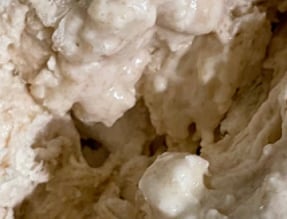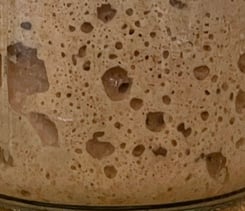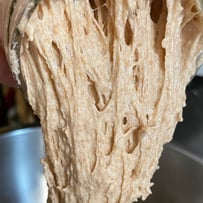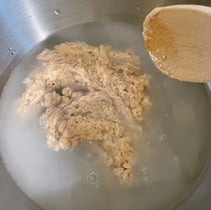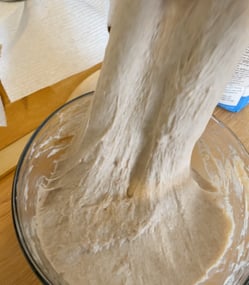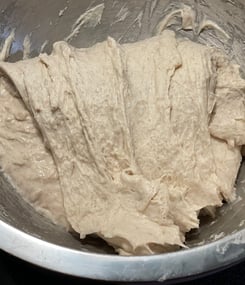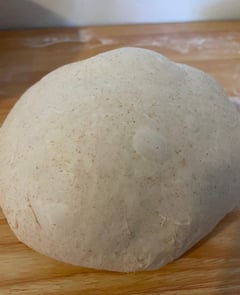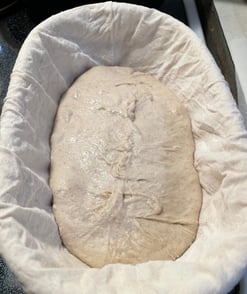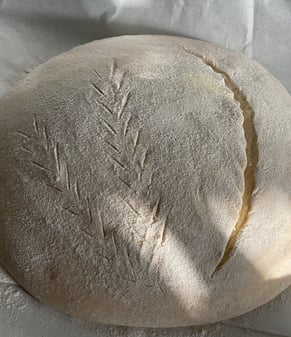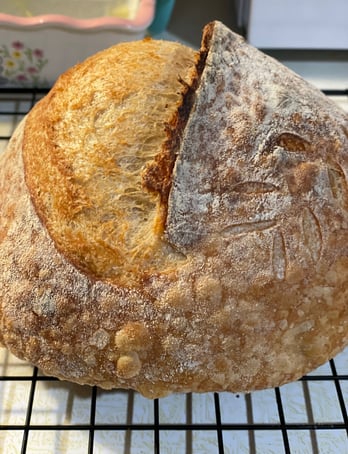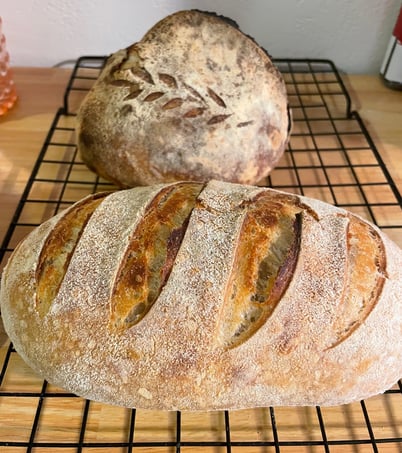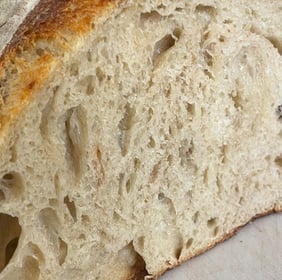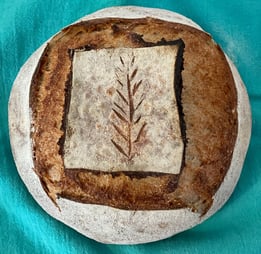Classic Sourdough Boule
Step by Step Guide to a traditional Sourdough
11/30/20244 min read
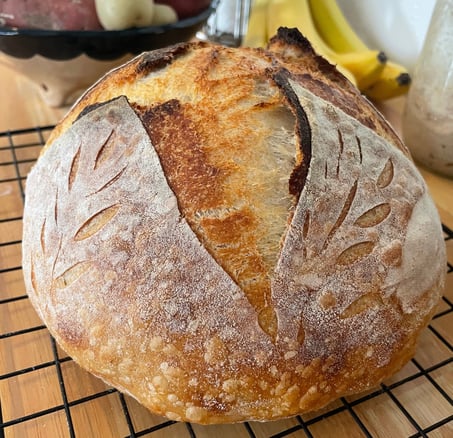

Instructions:
Creating a classic sourdough loaf is a rewarding process that begins with your starter. First, ensure your sourdough starter is active and bubbly; feed it a few hours before you plan to bake, or what I like to do, is feed it at night so that it's ready by the morning (Hence the name: Moonrise Starter). If you are beginning with Moonrise Starter in dehydrated form, head to the Rehydrating Your Whole Wheat Sourdough Starter Post under "Recipes."
To make the active leaven, you will do this by weighing 25 grams of starter, adding 50 grams of water, and 50 grams of your whole wheat flour. Mix thoroughly and let rise from either 4-12 hours approximately. *Varies drastically depending on temperature of your home. The warmer the environment, the faster it will rise. There is also a pretty flexible window of time you may use your active leaven. A few indicators will be that the amount has at least doubled in size, the top may have a slight dome shape, and you can visibly see bubbly air pockets throughout the jar. An easy trick to see how much it's risen is to draw a small line with a dry erase marker on the jar.
For a 75% hydration recipe, follow this recipe that calls for:
375 grams water
100 grams leaven
500 grams flour
15 grams salt
Note: You can use unbleached bread flour, all-purpose, whole wheat, rye, a mixture of different kinds, etc. Explore which tastes you like. For beginner baking, bread flour is recommended.
Start with your mixing bowl zeroed out on your kitchen scale. Add the water, then active leaven (a very active leaven will float in the water. If it does not float, it might not be active enough to help your bread rise) and mix until milky consistency. Next add in your flour, measuring out each proportion in grams. Mix thoroughly until all flour is mixed completely in with the water and leaven. This will be a thick "shaggy" dough with a sticky consistency. Cover with plastic or wet tea towel over bowl and let rest for a half hour. (Note; we have not added salt yet!)
After 30 minutes start stretch and fold process. The dough will now have an easier stretchy consistency to work with. Visualize 4 sides in your bowl and stretch the dough as high up as you can before it breaks and then over onto itself to the middle from each side. Let rest and repeat every half hour for a total of 4-6 times.
After allowing the dough to rest after a couple stretch and folds, incorporate the salt and mix it into the dough through the last couple stretch and folds. From the start of the first mixing, there will be about a 4-16 hour window of bulk fermentation, depending on temperature and environment. As it bulks on its way to double in size, look for bubbles and help shape the dough into a ball shape after each stretch and fold.
I like to do one lamination stage before the final shape which helps the dough build resistance and remember its form for baking. This is where you take the dough and stretch it out on a flat clean surface lightly covered in flour, and fold into a ball from a big rectangle folding into itself. This is optional.
Shape the dough into its final form and place it in a pre-dusted banneton basket with a light coating of rice flour for a final rise in the cold-ferment stage in the refrigerator. It's possible to let sit for a few hours and bake, but I prefer to let the dough cold-proof overnight, or even for a couple days before baking. The longer it proofs in the fridge, the more tangy and sour the flavor will taste from the fermentation.
A shaped dough ball --->
<--- Dough in Banneton
When you are ready to bake, take the dough out of the refrigerator while you preheat the oven to 500 degrees with your dutch oven inside. Flip dough onto parchment paper, lightly dust with flour and create your scoring with a razor.
After the dutch oven has preheated for one hour, sprinkle a little cornmeal on the bottom of the pot to prevent the bottom of the crust from burning, place the dough carefully inside and bake until slightly golden brown for about 25 minutes. Remove the lid and bake uncovered at 475 for another 15-20 minutes before removing and placing on a cooling rack. Allow the sourdough to sit for one hour before cutting into your freshly made bread, and enjoy your homemade sourdough!


